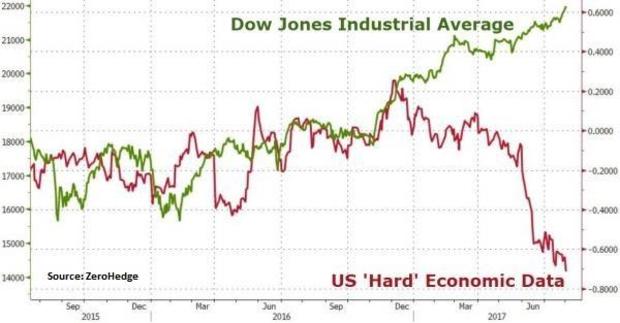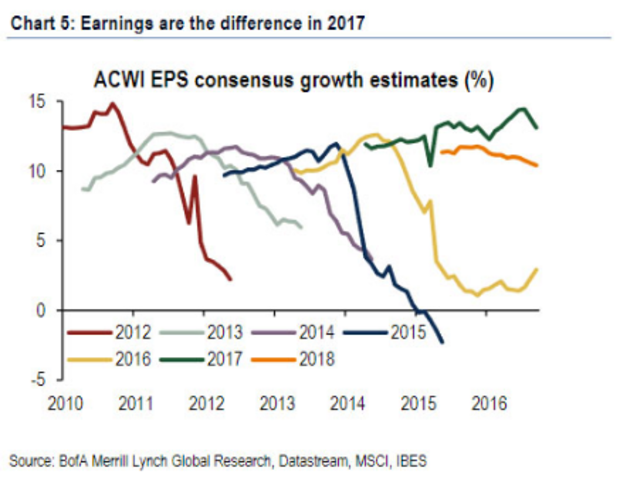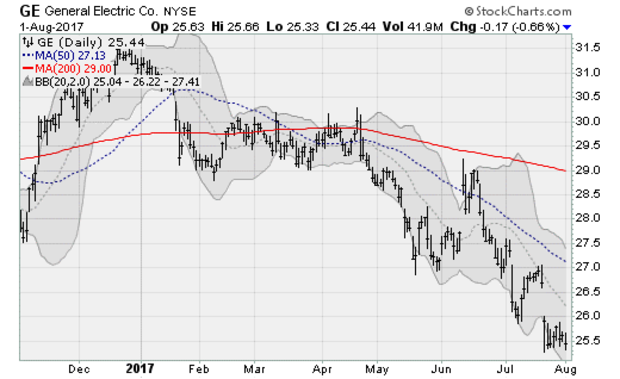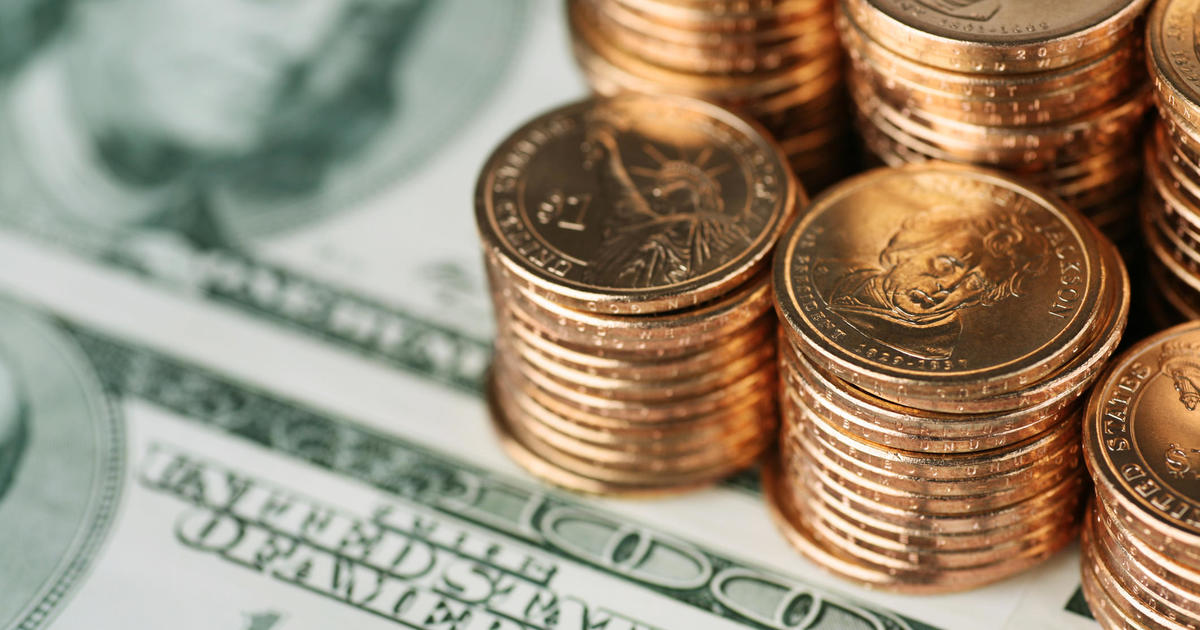Dow flirts with 22,000 -- but warning signs flash
U.S. large-cap stocks in the Dow Jones Industrials index stretched to another record high on Tuesday, the sixth consecutive gain, despite disappointing auto sales and tepid economic data. The real highlight came after the close, however, with Apple (AAPL) climbing more than 6 percent in post-market trading after reporting better-than-expected revenues and earnings.
The stock market's performance, and the Dow's approach of the 22,000 level, has attracted the attention of regular investors who are aggressively chasing this market higher. But the risks to this uptrend are also growing more numerous as memories of the last significant sell-off fade (the last 5 percent pullback was more than a year ago) and sentiment glows white hot.
I can't shake the feeling of foreboding. Because everywhere I look, sharp contrasts are in play.
For example, the split between the Dow's melt-up and the rollover in U.S. "hard" economic data (chart below), which will eventually affect corporate earnings growth. When that happens, the bulls won't be able to ignore the reality on the ground any longer.
President Trump is touting the stock market gains since Election Day on Twitter, a sharp reversal of his pre-election warnings of an ugly bubble. Apple's after-hours rise on Tuesday stands in opposition to the weakness other big-cap tech stocks are showing, including Amazon (AMZN) and Google parent Alphabet (GOOGL) -- both of which have slipped below the $1,000-a-share level.
Right now, with analyst earnings expectations still lofty, Wall Street is comfortably insulated from the disappointments on the ground. That's a sharp contrast to the midyear decline in earnings expectations seen over the past five years, according to Bank of America Merrill Lynch (chart above). The difference this time has been the energy price rebound.
While oil prices have indeed recovered from their early 2016 lows, the rest of the economy seems to have hit a wall in recent months as expected pro-growth legislation from the Republicans in Congress and the Trump White House has failed to materialize amid intra-party rancor, turmoil and gridlock.
Personal income growth has stalled, pushing real disposable income down on a monthly basis for the first time since December as the post-election ebullience fades. Manufacturing activity is coming off boil. U.S. auto sales have returned to lows not seen since 2014. And consumer sentiment is in steady decline.
Perhaps this explains the sharp drop underway in the Dow Jones Transportation index, which is down more than 6 percent from the high set a few weeks ago. Or in key blue-chip stocks like General Electric (GE), which has entered a bear market down nearly 21 percent from its December high (chart below). Or IBM (IBM), Starbucks (SBUX) and Exxon Mobil (XOM).
In fact, with the S&P 500 flirting with record highs, exactly 100 of its issues are in downtrends and trading below both their 50-day and 200-day moving averages. The percentage trading above their 150-day moving average has fallen to just 71 percent, down from a high of 83.4 percent in March.
According to SentimenTrader's Jason Goepfert, since 1928 when the Dow Transports and the Dow Industrials diverged to such an extent as now, the Industrials were down 3.2 percent on average six months later, with a maximum risk of a 10.1 percent drop and a maximum upside gain of 5.8 percent.
There's more.
According to the latest American Association of Individual Investors survey, folks are holding their lowest cash allocation since 2000 at a time when stocks are near historic levels of overvaluation. The current cyclically adjusted price-earnings ratio is eclipsing the level it held heading into the 1929 market crash.
And finally, August through September is historically the worst two-month period of the year for stocks. Since 1980, the S&P 500 has fallen 0.1 percent and 0.7 percent, respectively, on average during this time -- the only two months to show an average negative return.
If the Dow scratches up and over the 22,000 mark, enjoy it while it lasts.







